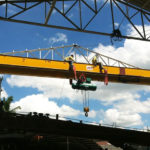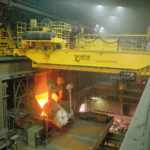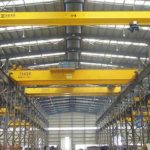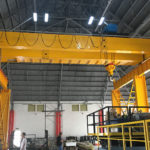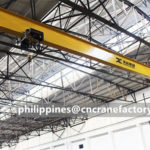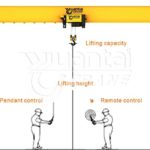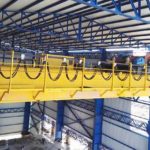Overhead cranes provide effective lifting solutions in the renewable energy and environmental industries. Every turbine, panel and dam in the wind, solar and hydropower generation process is inseparable from overhead cranes.
Overhead cranes play a role throughout the entire process of renewable energy projects, from construction and installation to maintenance and repairs. However since there are different types of overhead cranes, such as Underslung Overhead Cranes and top-running overhead cranes, it is crucial to choose the right overhead crane for the job.
Types of Overhead Cranes for the Renewable Energy Industry
There are two main configurations of overhead cranes: under-suspension overhead cranes and top-running overhead cranes. Underslung overhead cranes are usually single girders, suitable for lighter loads while top-running overhead cranes are usually double girders, suitable for heavier loads.
1.underslung overhead crane
An underslung crane is suspended from a building’s ceiling beams. They feature a trolley that travels along a track connected to the underside of a supporting structure. The lifting device is suspended from the trolley and is responsible for lifting and lowering the load.
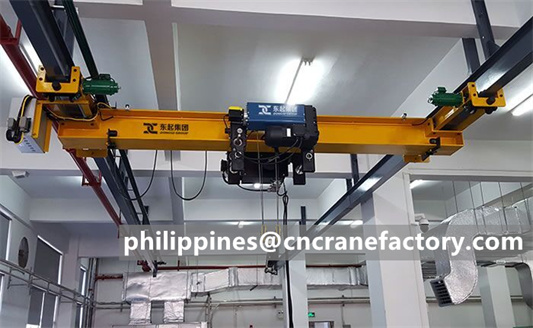
Advantages of underslung overhead crane:
- Space-saving design: Underslung cranes are ideal for facilities with limited overhead clearance. Since they are suspended from the ceiling, they maximize the available vertical space within the building.
- Good visibility: The underslung bridge crane design provides clear visibility of the work area below, thereby improving safety and operational efficiency during lifting and manoeuvring tasks.
- Cost-effectiveness for lighter loads: For handling the lighter loads common in solar panel installations or small wind turbine assemblies, underslung cranes may be a more cost-effective option than top-running cranes.
How can underslung cranes be used for renewable energy?
- Solar panel installation: Suspension cranes are commonly used in warehouses and manufacturing plants where solar panels are assembled. Its compact design allows panels to be moved efficiently throughout the production line.
- Hydroelectric power plants: Suspension cranes can be used to maintain and repair turbines and generators within hydroelectric facilities, especially where headroom is limited.
- Bioenergy plants: These cranes are important tools for moving lighter materials such as wood chips or biomass pellets within bioenergy production facilities.
2. top-running overhead crane
In contrast to underslung cranes, top-running cranes operate on top of a bridge structure supported by columns. The bridge itself runs along elevated runways installed on either side of the building. The lifting device is suspended from the bridge and can be moved along its length for precise load positioning.
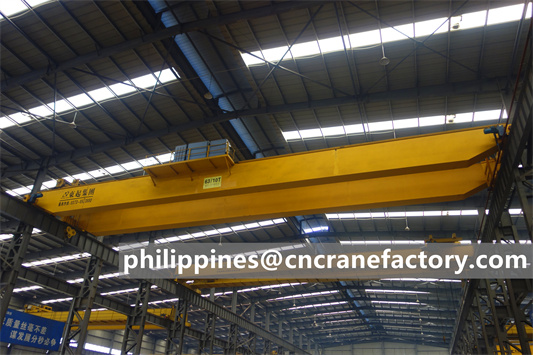
Advantages of top-running overhead crane:
- Higher Capacity: Top-running overhead cranes are generally designed to have greater lifting capacity compared to underslung cranes. This makes them ideal for handling large components of wind turbines, such as the nacelle (which houses the gearbox and generator) and rotor blades.
- Wider spans: Top-running overhead cranes allow for wider spans, enabling coverage of larger work areas within the facility. This is critical when manipulating large wind turbine blades or other oversized components in wind energy applications.
- Durability: Due to their rugged construction and increased lifting capacity, top-running cranes can withstand the demanding workloads and harsh environments often encountered in renewable energy projects.
How Can Top-running Overhead Cranes Be Used in Renewable Energy?
- Wind turbine installation and maintenance: Top-running overhead cranes are the first choice for lifting and positioning heavy components of wind turbines during installation and maintenance. Their large capacity and span ensure the safe and efficient handling of these large structures.
- Offshore wind farms: Top-operating bridge cranes play a vital role in the construction and maintenance of offshore wind farms. They are usually mounted on specially designed vessels or platforms to operate in open water conditions.
- Large hydropower projects: For large hydropower plants with large turbines and generators, top-running cranes with excellent lifting capabilities are critical for maintenance and repair tasks.
Choosing the Right Overhead Crane
Selecting the most suitable overhead crane for your renewable energy project requires careful consideration of several factors:
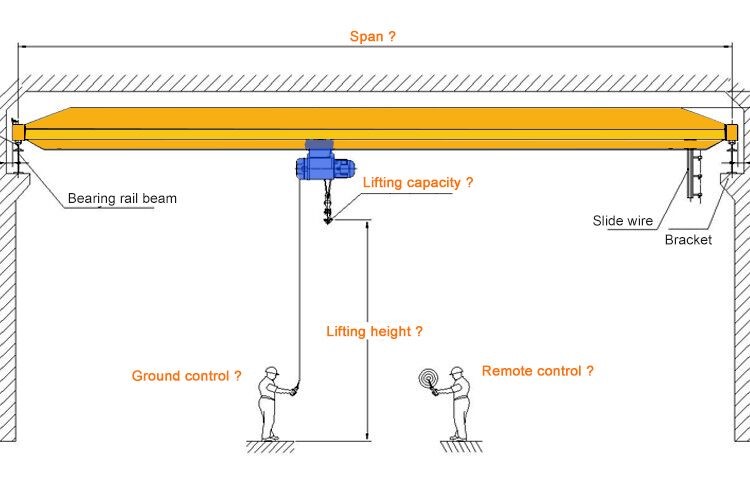
- Lifting Capacity: This refers to the maximum weight the crane can safely lift. Assess the heaviest component you’ll be handling and choose a crane with a capacity exceeding that weight to ensure a safety margin.
- Span: Consider the distance the crane needs to cover horizontally within your work area. Top-running cranes typically offer wider spans compared to underslung cranes.
- Headroom: Measure the available vertical clearance in your facility. Underslung cranes are ideal for situations with limited headroom.
- Work Environment: Factor in environmental conditions like dust, humidity, or extreme temperatures that may be present in your renewable energy facility. Certain crane features, such as weatherproofing or corrosion-resistant materials, might be necessary.
- Working Class: This refers to the frequency and intensity of use the crane will experience. If your project involves frequent lifting operations, a crane designed for a high-duty cycle will be more suitable.
- Budget: Overhead cranes come in a variety of configurations and capacities, impacting their cost. Determine your budget constraints while keeping in mind the importance of choosing a crane that meets your project’s specific needs.
Maintaining Your Overhead Crane
- Scheduled Inspections: Conduct regular inspections by qualified personnel to identify any potential issues with the overhead crane’s components, such as wear and tear, loose connections, or lubrication needs.
- Preventive Maintenance: Perform preventive maintenance tasks as recommended by the manufacturer’s manual. This may involve lubrication, cleaning, and adjustments to ensure smooth operation and prevent future problems.
- Record Keeping: Maintain detailed records of inspections, maintenance performed, and any repairs made. This allows for tracking the overhead crane’s condition and helps schedule future maintenance activities.
Safety Considerations: Working Safely with Overhead Cranes
- Training: Only trained and authorized personnel should operate the overhead crane. Training should cover proper operation procedures, safety protocols, and load-handling techniques.
- Pre-Lift Inspections: Before each lift, the operator must conduct a thorough pre-lift inspection to ensure the crane is in good working order, the load is properly secured, and the surrounding area is clear of any personnel or obstructions.
- Load Capacity: Never overload the overhead crane. Always adhere to the rated lifting capacity and avoid exceeding the weight limit.
- Communication: Clear communication is essential during lifting operations. The operator should maintain good communication with spotters and personnel in the vicinity of the overhead crane to prevent accidents.
Come and Get a Free Inquiry
Our Yuantai Crane Company has been exporting overhead cranes, gantry cranes, jib cranes and electric hoists to the Philippines and other Southeast Asian countries as well as countries around the world for more than ten years. We have very rich experience and a green crane manufacturing industry chain. contact us to get free crane solutions and free quotations, and look forward to our friendly cooperation!
